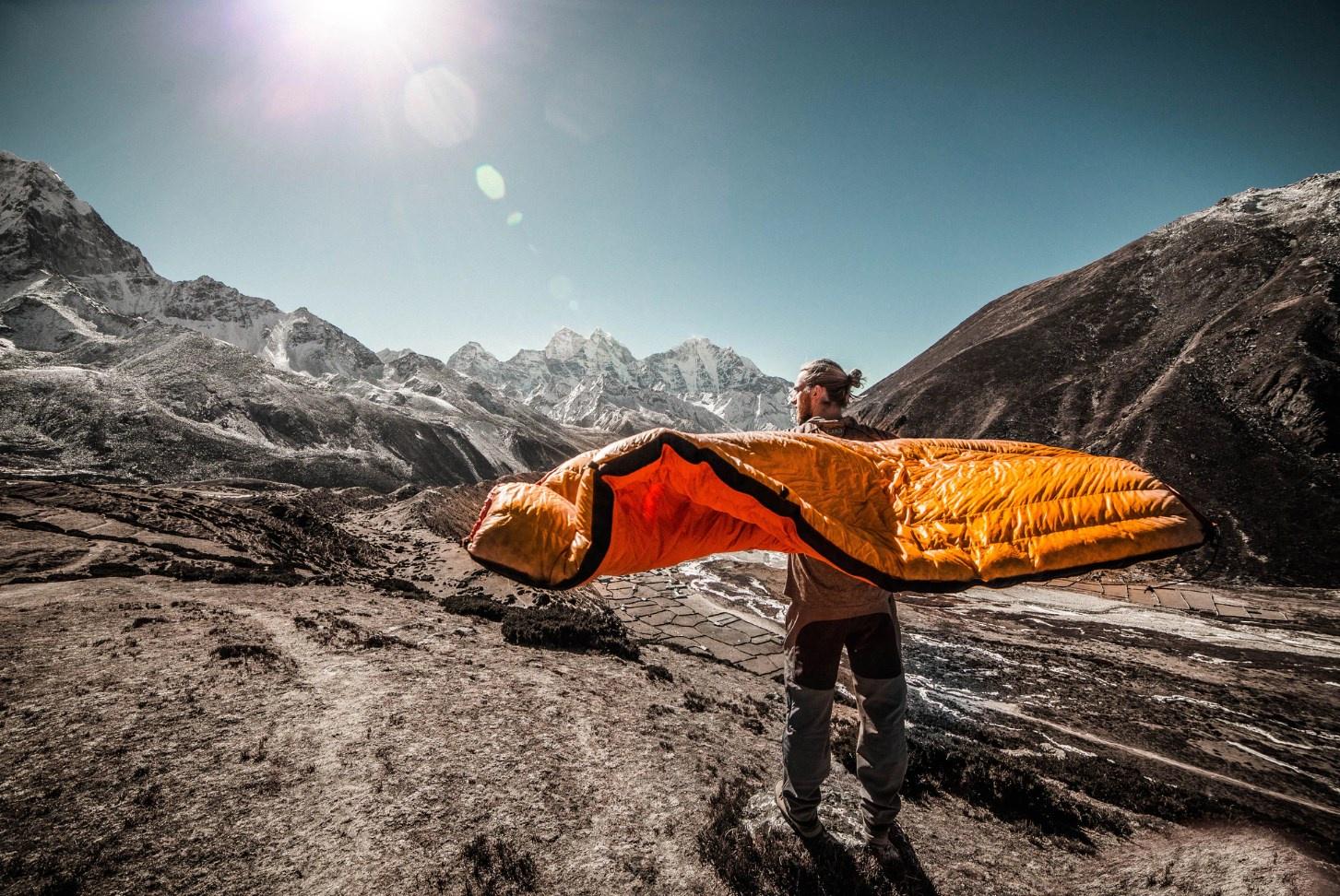
How does a sleeping bag keep you warm?
Have you ever asked this question before? If this query suddenly popped in your mind right now, this guide is right for you. Here, I am going to explain the anatomy and mechanism of sleeping bags. Make sure that you can get all the essential points.

All of you are aware that tents are enough to keep you warm while you are camping or backpacking. There are little means for these tents to increase their internal temperature, as they are not innately designed that way.
Because of this, sleeping bags became an essential amenity for outdoor adventures. They provided the one thing that outdoor goers require when staying overnight in an open field or high-altitude terrain: insulation.
Of course, sleeping bags work through insulation. There's no other way around here.
Specifically, sleeping bags work as heat trappers. The air that surrounds you is the ones that they prevent from escaping. Through the insulation and seamless structure they provide, they let the air warm and circulate around you.
The body's metabolism also contributes to the warming of the air. Hence, it is quite vital that the air will not escape, as your body has limited means to heat its surrounding.
Keep in mind that most of these sleeping bags are designed for single person use. Some double bags are still just a by-product of the combination of two single sleeping bags. The reason for this is quite simple.
You see, it is easier for air to get warm if it is enclosed in tight and small spaces. The tighter the area is, the faster the air gets warm. Furthermore, this design enables maximum thermal efficiency. In short, it retains the heat for extended periods.
Now, let's move to the specifics. We already know how a sleeping bag works. Basically, the latter works as a heat trapper.
But how does it trap heat? What are the components that it uses to ensure that air gets warmed and retained?
This is where the term "insulator" comes into play. Without them, these sleeping bags would just be ordinary shells that don't get anything warm at all.
There are two types of insulators used on sleeping bags: down and synthetic. Choosing between them might be a tricky task, as there are a lot of things that you need to mind, such as the application and your personal preferences.
Down insulation is derived from the plumage that is present beneath the exterior feathers of ducks, geese, and other waterfowl. They are usually characterized by being fluffy and soft.
Technically, down is different from the actual feathers. You should keep that in mind.
Down warms the air by trapping it efficiently. It is also great for being compressible and light; it is the perfect choice for backpacking and lightweight backcountry pursuits! Interestingly, down is durable and offers excellent ventilation.
Down also excels in both dry and cold conditions. After all, it offers exceptional insulation and ventilation at the same time.
The quality of the down is measured by fill power. Specifically, the term is used in the capability of the down to loft and trap heat. Fill power is gauged by the volume of one ounce down can occupy in a testing device per cubic inches.
For instance, an 800-fill-power down simply means that a single ounce of that down can fill 800 cubic inches of space. When it comes to performance, it is said that goose down has a better performance than duck down.
But why is fill-power essential? Well, high fill power indicates that a sleeping bag doesn't require too much down to achieve a particular rating. This means more space-saving capability of the sleeping bag!
However, the down fill is not all praises. There are still criticisms for it. One is its weakness when it comes to water. Once drenched wet, it will lose its insulating capability.
Another concern for the down insulation is how they were derived. Animal abuse will always be a present issue here. Therefore, a down sleeping bag should have a Responsible Down Standard certification to ensure that it is safe to use.
Next stop is the synthetic insulation. Basically, synthetic insulation is the response to some of the issues that down insulation encounters.
The insulating capability of synthetic fill is not behind to down. In fact, some synthetic sleeping bags can easily outshine their down counterparts.
Furthermore, the biggest takeaway of these synthetic fills is their price. They are not too harsh on the wallet. They should be your top choice if you are cutting down your expenses.
Synthetic insulation is often made from polyester. It can perform even if it is wet. Down insulation cannot do such a thing. Furthermore, it is hypoallergenic and durable.
On the flip side, synthetic sleeping bags are heavy and bulky. If you are into backpacking and hiking, this particular option might not be right for you. Also, I do have to acknowledge the fact that the warmth-to-weight ratio of synthetic sleeping bags is lower than their down counterpart.
The durability of synthetic insulation is an issue too. Every time you stash them in a stuff sack, its quality reduces.
Of course, there are instances where you will need extra warmth. You always need to anticipate the unexpected. The more prepared you are, the easier it is for you to keep yourself safe and protected.
This time, I am going to share some important tips that could help you maintain the warmth of your sleeping bag.
To maintain the quality and insulation of a sleeping bag, proper care is a must. It doesn't matter if you have a down or synthetic shelter. If you are not going to take care of it, there's a certainty that it won't last in service.
One of the biggest enemies of sleeping bags is compression. The more you compress it, the more gets damaged.
It is crucial that you can bring it without being compressed. Because of this, you need two types of storage compartments: a stuff sack and a storage sack.
A storage sack is where you can safely stash your sleeping bag without the fear that its insulation will get damaged. It is designed to handle sleeping bags without the need to pack them tightly.
Meanwhile, a stuff sack is where you are going to store the sleeping bag during your adventure. You can then store the bag on the sack without the need to compress it.
It is pivotal that you can keep the sleeping bag clean whenever you are not using it. You should also shield it from abrasion, as it can cause the fabric of the exterior shell to get ripped.
Fortunately, proper use is not difficult since you are only required to put the sleeping bag inside your tent.
Don't step on your sleeping bag, especially if you are wearing a pair of dirty footwear. If the moment comes when your sleeping bag is exposed to rain, moisture, and ice, dry them right away. Specifically, the sleeping bag should be dried under the heat of the sun.
These are the things that you should know regarding the insulation of sleeping bags. Specifically, learning how a sleeping bag keeps you warm is crucial since it gives you an idea of how you are going to treat it before and after use.
Regardless of what kind of insulation you are going to pick, make sure that you can take care of it. Always remember that a sleeping bag is a significant investment that can keep your comfort afloat while you are outdoors.
I hope you learned from this guide. For questions and suggestions, feel free to drop them in the comment section below.